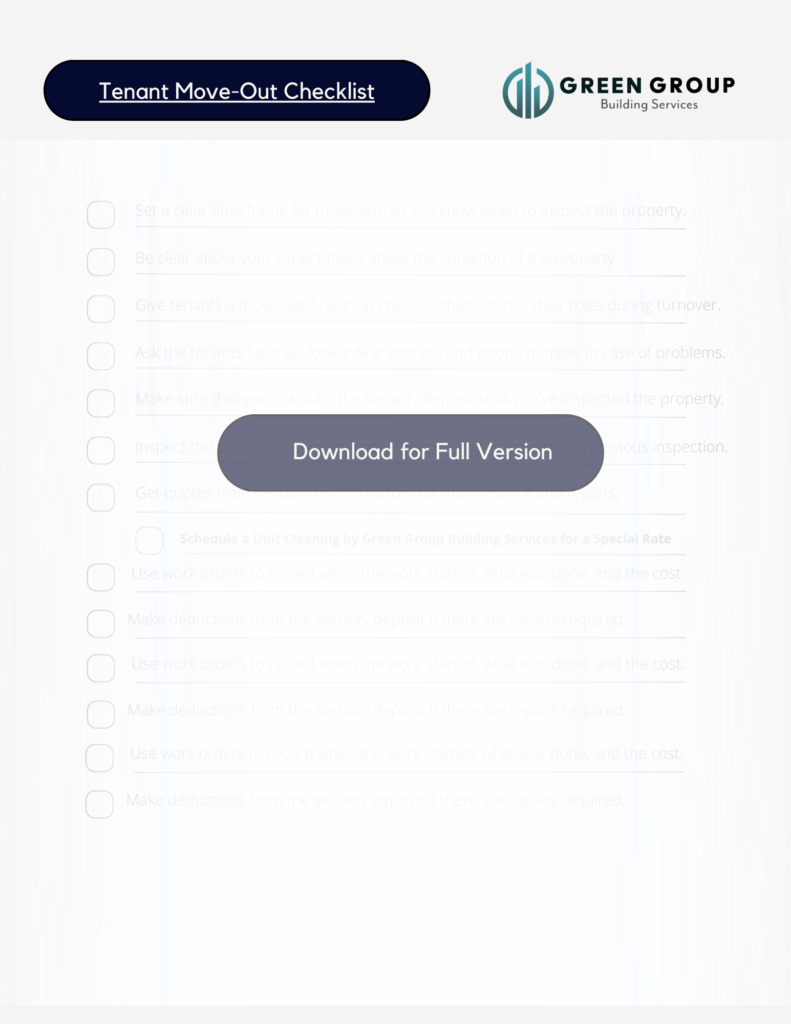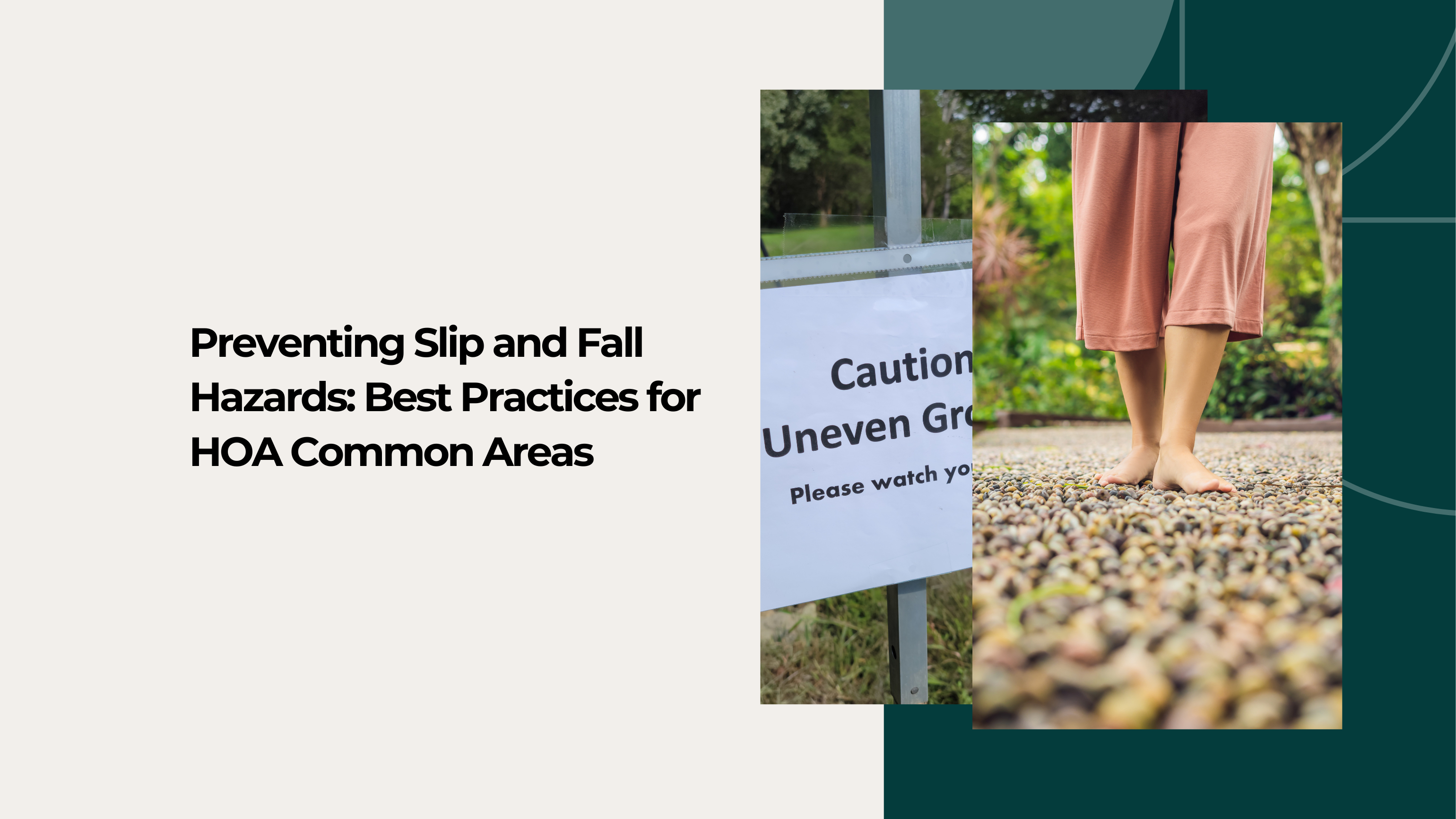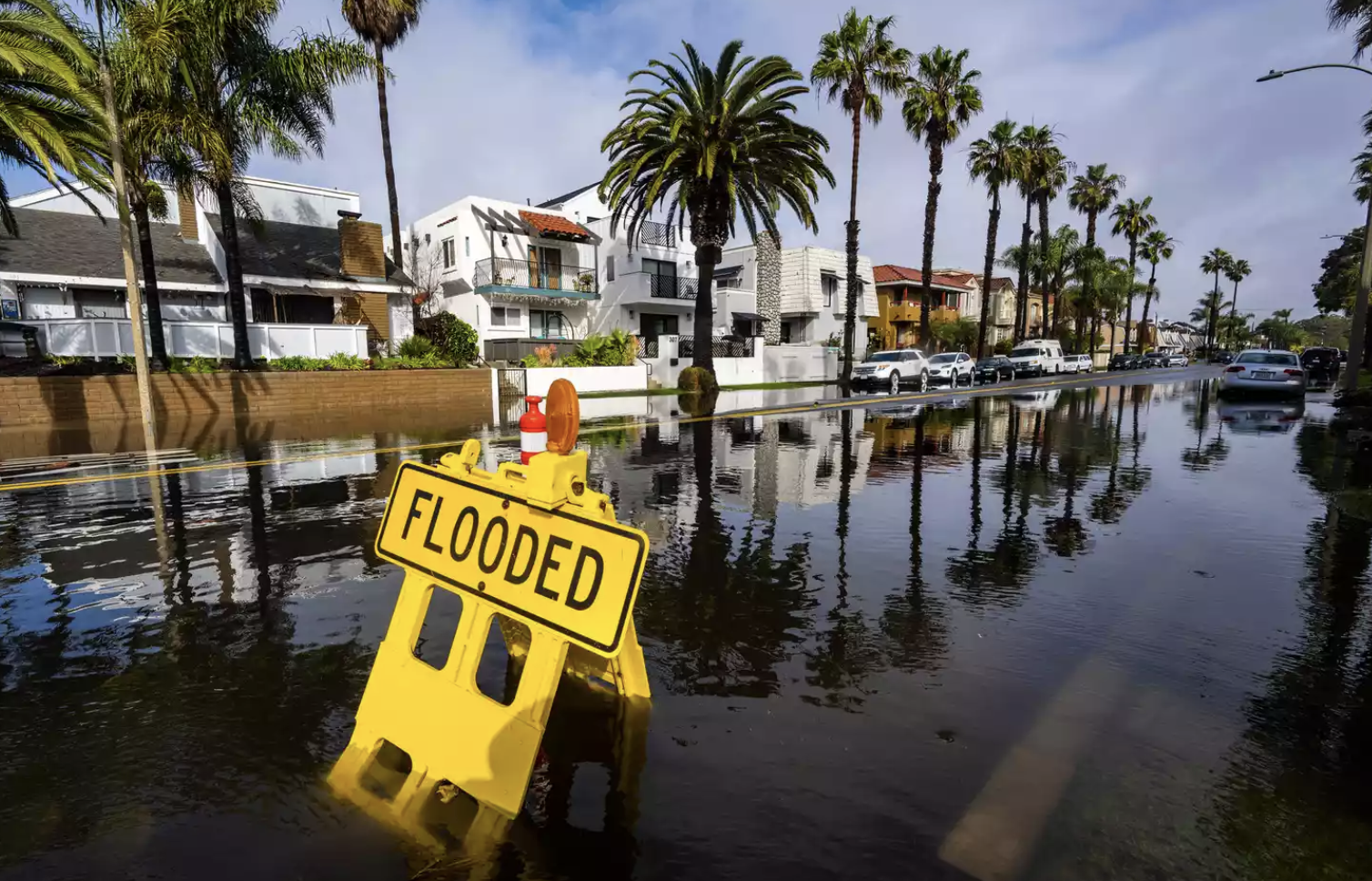Discover how prioritizing cleanliness in property management can boost tenant retention and long-term success in Los Angeles. Elevate living experiences, foster loyalty, and ensure profitability with high cleanliness standards.
Continue readingCustomized Cleaning and Maintenance Plans for Los Angeles Commercial Spaces
Elevate your commercial property in Los Angeles with tailored cleaning and maintenance plans. Discover how personalized solutions can transform your space for success.
Continue readingGreen Cleaning Solutions: Eco-Friendly Options for HOA Communities
HOA Common Areas: Best Practices to Prevent Slip and Fall Hazards
Budget-Friendly Maintenance Solutions for Property Managers: Where to Prioritize
Free Tenant Move-Out Checklist for Property Managers
Are you and your company prepared for a busy rental season? Here’s a free downloadable checklist on what procedures you should be taking while a tenant is moving out of your rental property.

Rental season is a busy time, and you need to make sure you’ve covered all of your bases before your tenants move out and new tenants move in. This not only ensures that your properties are in good condition, it also allows you to start off on the right foot with your new tenants.
- Check your tenants first. Make sure that you document reference and credit checks to do your due diligence in choosing the right tenants for your property.
- Make sure that you’ve completed the property inspection, maintenance, and repair process above. Have the new tenants examine the property to ensure that any defects are noted.
- Go over property rules and restrictions with the tenants, so that they’re clear regarding what is and is not allowed. You can also include this in a tenant welcome package.
- Get address, phone, and financial information from the tenants, so that you can set up payment.
- Make sure that you get a security deposit and that you clarify with the tenants what is covered by you and what will be charged to the deposit.
Let this checklist help you guide your own procedures.
How to Prepare for the Next Rainy Day in LA
During recent storms, we’ve seen a handful of our client’s properties get damaged over the past few weeks, potentially costing thousands to fix. A few clients with flooding in their complex’s garage, more with leaky ceilings and pooling on top of roofs because their gutters weren’t clean. Here are some ways to protect your HOA or commercial property in the future!
Clean your Gutters and Downspouts
This is the most effective and easy way to prevent damage to your roof and outdoor areas by having routine cleanings of gutters and downspouts. When drains clog with leaves and debris, water overflows and spills down where it can damage walls and footings. Especially if trees surround your property, we recommend quarterly gutter cleaning.
Let an Inspector Check your Roof
Inspectors have jobs for a reason! Utilize local inspectors in Los Angeles to check your roof and potential leaks. Inspectors have trained eyes that not all of us can catch. Having routine checks with an inspector could potentially save thousands incase of damages.
Have your Property’s Trees Trimmed
It’s not rare to drive down the streets of Los Angeles and find snapped trees after a storm or a windy night. Regardless of the season, trimming trees and clearing brush can prevent fires and have your land up-rooted during storms. Check in with a gardener quarterly to see what is necessary to trim down or remove.
Start that Big Project
One of our clients waited a bit too long to construct a retainer wall that would prevent their slopped property from receiving mud and water from entering their underground garage. If your property has a project in mind that needs to be done in order to avoid damages due to weather, then make it your HOA’s priority.
How Can Green Group Building Services Help
If your HOA or commercial property in Los Angeles could use the help of a 360-property maintenance company like us, then look no further! We can help you set a plan to perform routine checks and cleaning to prevent any damages in the future.







